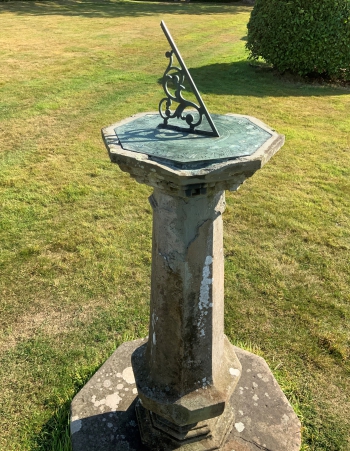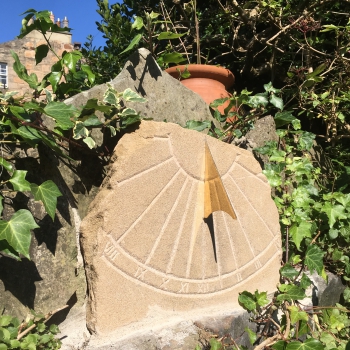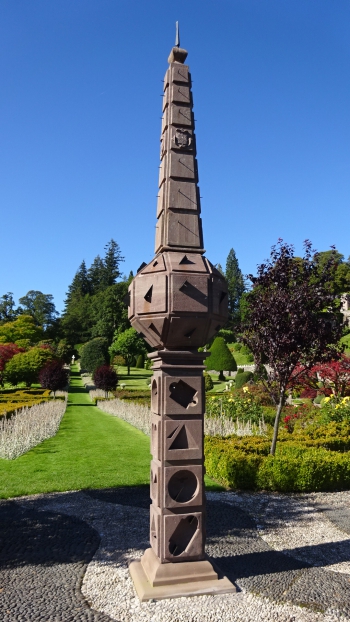A fine 18th century horizontal sundial stands in the gardens of the House of Dun near Montrose. The dial is octagonal made in bronze set in a carved and moulded stone raised on a baluster pedestal and stone step. Elegant tracery scroll work supports the gnomon.
The dial engraving is detailed employing delicacy of variation in deep and light incisions and ornament. The chapter ring carries exact time divisions down to a single minute. Continue reading



